6 key takeaways from The State of School Transportation 2022 Report
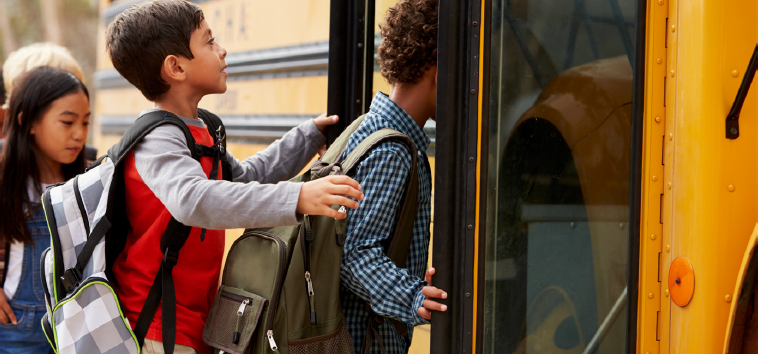
HopSkipDrive recently published its annual State of School Transportation Report for 2022. Our goal? To discover how a wide variety of school and transportation professionals — from bus drivers to principals — really feel about the state of school transportation today.
Here are six key takeaways from our comprehensive survey.
1. Educational inequity starts with inadequate transportation.
All students deserve equal, uninhibited access to an outstanding education. But in practice, many roadblocks prevent children from a meaningful, complete education. And there’s perhaps no greater barrier to learning than reliable, safe transportation to and from school.
This year’s survey proved that the connection between transportation and education is as strong as ever. In fact, half of the respondents reported a direct link between access to transportation and educational equity in their school district.

“When students’ ability to attend school is directly linked to their ability to access public transportation, there will always be inequities and disparities,” said one anonymous respondent.
This is especially true in poor and geographically isolated areas, where resources are thinner, and school bus routes are few and far between. Students in these areas might not be able to attend the school that’s best for them — or even get to school consistently.
These students don’t just struggle to get to and from school, either. They also miss out on many other meaningful opportunities, like sports, clubs and other after-school or enrichment activities.
“Students who have poor transportation access often miss chunks of instruction during their day, or can’t participate in extracurricular activities due to transportation barriers,” said another anonymous respondent.
And for the most vulnerable of students — those with special needs, those experiencing homelessness or those in foster care — transportation challenges are further exacerbated. The ongoing bus driver shortage, which we’ll touch on in a moment, is only making inequality worse.
“Our students with special needs have the lowest attendance as a result of transportation issues. With the school bus driver shortage, if a bus route is not running, the students do not have a way to attend school. It is so inequitable,” said a third anonymous respondent.
2. Chronic absenteeism remains a significant concern.
Another key takeaway from this year’s report? Attendance continues to be a challenge, especially as more and more schools resume full-time, in-classroom learning.
The link between transportation and attendance, as always, is strong. In fact, two-thirds of survey respondents report that access to transportation has affected student attendance. And nearly the same amount of respondents reveal their school district is grappling with chronic absenteeism.

“The buses don’t have drivers. The parents don’t have cars or have to get to work on time. These are some of the things that have been attendance barriers,” said one anonymous respondent.
Data from the survey suggest that the most vulnerable populations face the highest absenteeism rates. Survey respondents indicated that students in foster care, students experiencing homelessness and low-income students experience higher rates of absenteeism than the general student body.
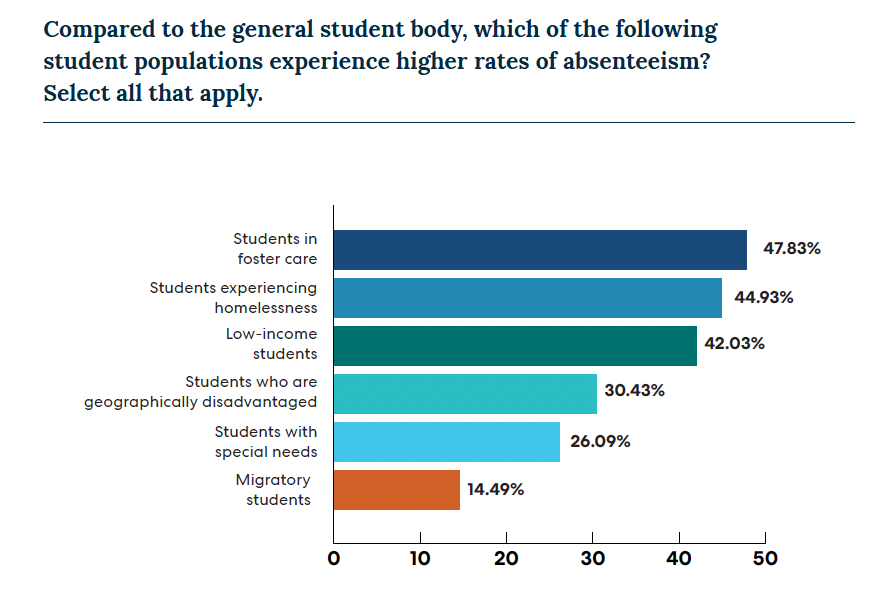
“Students who rely on cab transportation, such as our homeless students, are frequently late or absent,” said another respondent.
Nearly 49% of respondents reveal that their attendance rate has gone down since 2021. And that only adds to educational inequity.
“Students are missing so many days of instruction that they are falling behind,” said a third survey respondent.
3. Pain points like funding and logistics are major frustrations.
Survey respondents were quick to articulate their frustrations with their everyday challenges. Some of the biggest pain points? School transportation funding limitations, industry regulation and policy changes, and logistical difficulties planning individualized transportation.
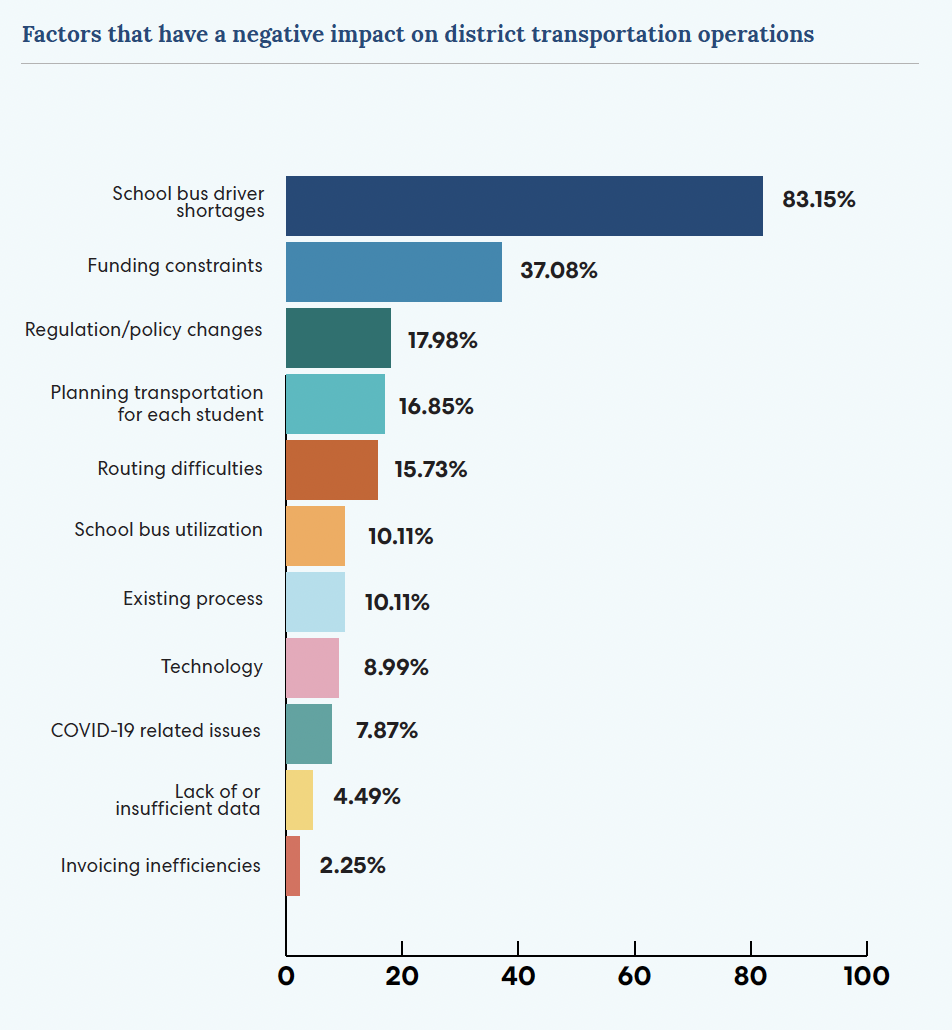
“We’re underfunded by the state for transportation,” said Wayne Winters, a director of transportation.
Of course, schools are still finding ways to get children into their classrooms — even if the workarounds are unconventional. As previously mentioned, transportation directors are thinking outside of the box.
What are some of the ways schools are working around the school bus driver staffing shortages? School districts have staggered school schedules, reduced bus routes, expanded walk boundaries and become less rigid about CDL requirements.
These workarounds aren’t without consequences. Buses are overcrowded, drivers are exhausted, school employees are stretched thin covering areas outside of their normal duties, and the commutes are long for children and drivers alike.
“Due to lack of drivers, routes can be long with students on the bus for over an hour, and buses are overcrowded,” said one respondent.

4. The bus driver shortage makes getting to school that much harder.
Another factor contributing to education inequity? The ongoing bus driver shortage. Nearly nine out of 10 respondents (88%) report that the bus driver shortage has constrained transportation operations. Compare that to 2021, when 78% of respondents reported busing constraints.
Of course, the bus driver shortage isn’t a new issue; it’s been going on for years. But the COVID-19 pandemic has escalated the problem. The chief issue? Recruiting new drivers is a significant challenge — and low pay, early retirement, COVID-19 concerns, low morale and more attractive driving jobs in the private sector are only making hiring harder.
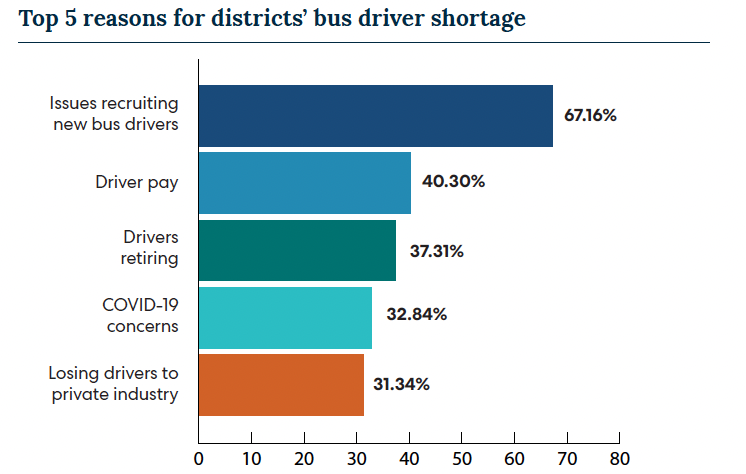
“Right now, the majority of the people driving our buses are older. Many are retired and doing this to supplement their retirement,” said Angela Marshall, a transportation director. “This is fine, but there is a certain amount of concern attached to it, as well. There are more health concerns with this generation, and yet they are the ones transporting our younger generations. There need to be incentives for individuals in their 30s to 50s.”
Taylor Perrington Ashley, a transportation supervisor, also touched on the challenges with busing students. “Driver morale is a huge issue. Drivers are having to bend over backward to help cover routes or work longer hours,” she said.
5. COVID-19 continues to be a major concern.
While most schools have returned to classrooms, COVID-19 remains a major issue for survey respondents. That’s in part because concerns about the coronavirus are a major contributor to the bus driver shortage.
“There is also a fear of COVID and other related illnesses that is causing older retired people who would have normally wanted to drive for us to withhold from applying,” said Taylor Perrington Ashley.
Another respondent agreed, revealing that both COVID-19 and budgeting are causing transportation issues. “We are still dealing with residual effects from COVID-19 and some budgetary issues that are causing some overcrowding on buses,” said the anonymous respondent.
6. Staffing shortages are plaguing almost all school districts.
The bus driver shortage is well documented, but schools are facing staffing shortages in their classrooms and administrative offices, too. In fact, nearly 95% of respondents reported a staffing shortage at their school.
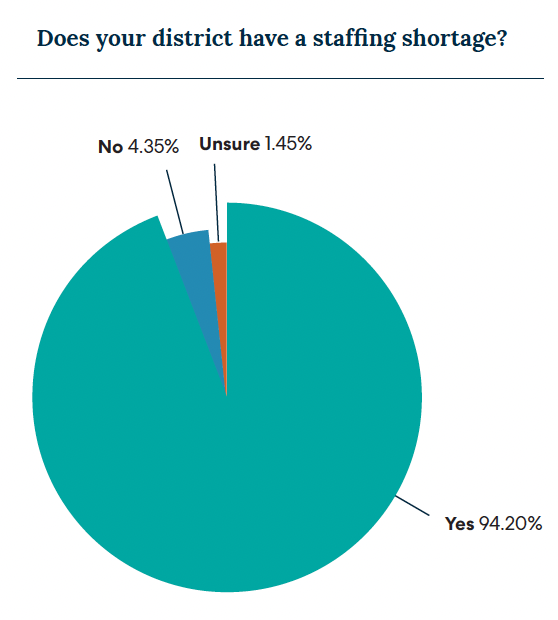
These shortages include teachers, bus drivers and custodians.
“What keeps me up at night is how to keep schools open and operating during the pandemic and amid staffing shortages,” said Josh French, a superintendent.
Some schools have been forced to ask their traditional employees — like teachers and administrators — to drive school buses. “We are having to pull teachers and coaches to assist with transportation,” reported Bridgitte Hargrove, a director of transportation.
Dodi Young, a transportation coordinator, also lamented the staffing shortage — and the effect it’s having on the employees who are picking up the slack.
“Great employees who show up daily are getting worn out from covering other routes and responsibilities,” she said.



